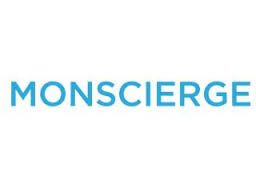Insights from Monscierge’s Q3/Q4 2012 GEM Report
Monscierge is an interactive software company that helps hotels connect today’s savvy traveler to trusted local recommendations, understanding that simplicity and rapidity are essential elements of any new technological implementations. It’s always a joy to read their GEM Reports, highlighting the latest and greatest in hospitality trends.
Now, you might be asking yourself, “It’s March, why should I care about a report that came out in the fourth quarter of last year?” For this, my answer is simple: repetition. Some of the points made in this particular GEM hit home so hard that they are worth stepping up on my soap box and reiterating with a megaphone. In this case, repetition works all the better now that you’ve had some time for their findings to fade from memory.
The GEM Reports are distilled from numerous news stories, individual success cases, research studies, topical essays and firsthand experiences of the Monscierge team. I guess if I’m to give my synopsis and thoughts on this Q3/Q4 2012 edition, it’ll be doubly distilled. So, get ready for some 160-proof hospitality libations!
The crux of this GEM Report focused on some of the most important contemporary factors that contribute to loyalty and differentiating your product from competitors. To achieve these two virtues, I clued in to three main themes.
1. Authentic localized experiences
The first point may be fairly intuitive, and you’ve probably heard everyone talking about “going local” in the past few months, yet there are many creative forms where you can actualize this quality that are either overlooked or not promoted. The most obvious of the localization tactics pertain to the restaurant. Using local ingredients as well as crafting seasonal menus centered on regional produce and dishes are both solid ploys. If you grow herbs, spices or veggies on property, even better (great social media picture fodder, by the way). Whatever your efforts, you must be sure that the menu (your primary method of communicating these benefits with a patron) is up-to-date with the latest local infusions and uses buzz phrases like “farm to table” to further highlight all this. Furthermore, your chef has to be on board with this plan.
In-the-hotel dining is but one subsection of the local movement. Guests also want the inside scoop on the latest restaurant openings, hidden gems, hot bars, meal deals and mind-blowing dishes that are sweeping the area. This falls on your concierge, butlers or front desk to stay on the pulse with what’s happening and where locals are congregating. Ditto for attractions, shopping destinations and nightlife — don’t direct your guests to the tourist traps!
Essentially, what’s required in the localized knowledge sector is to make your team an alternative source of information beyond a Google search. Because, let’s face it, if a guest wants an authentic experience in a foreign city, 60 minutes of research via Google will tell them exactly what they need to know. They’re coming to you instead to get that information in 60 seconds. And this doesn’t have to only concern guest-staff interactions, but if you are consistently active on social media, your blog and your mobile app updates, then this will do the job for you.
2. Reinvigorating the hotel lobby
What’s happening with the hotel lobby is basically a facsimile of what Starbucks did for the coffee shop 20 years ago. Does the buzz term “third space” ring any bells? It describes one of the key selling points of the modern café and what your hotel should strive to create in your lobby — a hybrid between work and play. Monscierge stresses that the design of the lobby must coalesce social and super-functional elements into a space where guests deem it suitable for a full spectrum of tasks and purposes.
It’s all about creating the right emotional attachment with your customers as well as fond memories. Stark, clinical colors bristling through a sparsely populated room don’t exactly elicit good feelings — maybe even the opposite. On the flip side, a fun, lively space will never be the crucible that determines once and for all if a guest enjoys his or her time with you. But it will certainly be a strong — albeit silent — contributing factor.
You want your guests to be relaxed and entertained, and you won’t achieve either of those qualities with bland, desolate corridors and acerbic staff. To create a modern, dynamic space where guests actually want to spend more than the five minutes required to check in, you create opportunities for interaction through comfortable furniture, vibrant décor and room to be productive. Free Wi-Fi helps as well, especially if your clientele have smartphones, tablets or laptops (read: everyone).
3. Internal culture of success
My last generalized takeaway I gathered more by reading between the lines. Having an internal culture of success means that you can no longer rely on one senior leader to guide and mandate your human resources towards contemporary ideals. This must happen organically, “from the ground up” and throughout all levels of management.
For example, all the latest reports on social media for hotels show that the most successful efforts occur when all departments contribute, not just public relations and marketing. There might still be the one “controller” who actually types in the corporate tweets or uploads the cell phone images, but the raw information should be sourced and supplied company-wide. Your social media manager doesn’t exist in a bubble; he or she needs support from every team member in order to stay on top of hotel happenings and to be effective.
This sort of pervasive mentality extends to all manner of operations. If you are a senior manager and you read an article that might benefit a colleague in another department, pass it on. Never be obstinate towards maintaining the status quo at any cost, while at the same time don’t be a weathervane manager who ardently supports the next big thing until the next next big thing comes along. Understand that true change is slow but inevitable, then proceed with prudence and confidence towards where your business needs to be.
Other trends and takeaways I gleaned from this report were the increasing tendency towards LEED or green programs (which are also becoming increasingly cost-effective), narrow-cast or ‘nichified’ marketing campaigns and, of course, the utter necessity of free Wi-Fi. I highly recommend you give the GEM a read; to get on Monscierge’s mailing list, ask nicely here.
(Article published by Larry Mogelonsky in HOTELSmag on March 13, 2013)




